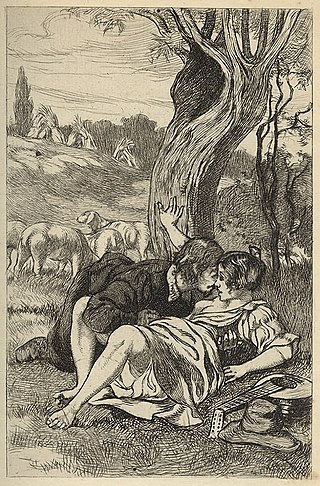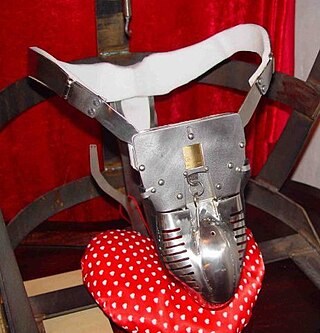
Foreplay is a set of emotionally and physically intimate acts between one or more people meant to create sexual arousal and desire for sexual activity. Although foreplay is typically understood as physical sexual activity, nonphysical activities, such as mental or verbal acts, may in some contexts be foreplay. This is typically the reason why foreplay tends to be an ambiguous term and means different things to different people. It can consist of various sexual practices such as kissing, sexual touching, removing clothes, oral sex, manual sex, sexual games, and role playing.

A sex toy is an object or device that is primarily used to facilitate sexual pleasure, such as a dildo, artificial vagina or vibrator. Many popular sex toys are designed to resemble human genitals, and may be vibrating or non-vibrating. The term sex toy can also include BDSM apparatus and sex furniture such as sex swings; however, it is not applied to items such as birth control, pornography, or condoms. Alternative terms for sex toy include adult toy and the dated euphemism marital aid. Marital aid also has a broader meaning and is applied to drugs and herbs marketed to enhance or prolong sex.

Prostate massage is the massage or stimulation of the prostate gland for medical purposes or sexual stimulation.

A massage parlor, or massage parlour, is a place where massage services are provided. Some massage parlors are front organizations for prostitution and the term "massage parlor" has also become a euphemism for a brothel.

Erotic sexual denial is the practice of refraining from sexual experiences in order to increase erotic arousal and/or tension. It is commonly used as sex play within the context of a dominance and submission relationship, though it can also be a solo practice. The prohibited experience can be narrowly or broadly defined and banned for a specific or indeterminate length of time, depending on the practitioner. The experience withheld can be any favored or desired sexual activities, such as specific acts or positions, provided it is something the practitioner wants.

Anal masturbation is an autoerotic practice in which a person masturbates by sexually stimulating their own anus and rectum. Common methods of anal masturbation include manual stimulation of the anal opening and the insertion of an object or objects. Items inserted may be sex toys such as anal beads, butt plugs, dildos, vibrators, or specially designed prostate massagers or enemas.

A forced orgasm is consensual BDSM or kinky sexual play whereby a person consents to be forced to orgasm in a way that is beyond their control.

Female hysteria was once a common medical diagnosis for women. It was described as exhibiting a wide array of symptoms, including anxiety, shortness of breath, fainting, nervousness, sexual desire, insomnia, fluid retention, heaviness in the abdomen, irritability, loss of appetite for food or sex, even sexually forward behavior, and a "tendency to cause trouble for others". It is no longer recognized by medical authorities as a medical disorder. Its diagnosis and treatment were routine for hundreds of years in Western Europe.

A vibrator, sometimes described as a massager, is a sex toy that is used on the body to produce pleasurable sexual stimulation. There are many different shapes and models of vibrators. Most modern vibrators contain an electric-powered device which pulsates or throbs. Vibrators can be used for both solo play and partnered play by one or more people. Devices exist to be used by couples to stimulate the genitals of both partners. They can be applied to erogenous zones, such as the vulva, vagina, penis, scrotum, or anus, for sexual stimulation, for the release of sexual frustration and to achieve orgasm. Vibrators may be recommended by sex therapists for women who have difficulty reaching orgasm through masturbation or intercourse.

The Magic Wand aka the True Magic Wand, Magic Wand Original, Vibratex Magic Wand and Original Magic Wand) is an AC-powered wand vibrator. It was originally manufactured for relieving tension and relaxing sore muscles; however, it is most known for its use as a sex toy. Japanese company Hitachi listed the device for business in the United States in 1968. Sex educator Betty Dodson popularized its use as a vibrator and masturbation aid for women during the sex-positive movement in the late 1960s. It functions effectively as a clitoral vibrator, to bring people to orgasm. The wand is 12 inches (30 cm) long and weighs 1.2 pounds (540 g) with stimulation provided by its rubberized 2.5-inch (64 mm) head.

Non-penetrative sex or outercourse is sexual activity that usually does not include sexual penetration. It generally excludes the penetrative aspects of vaginal, anal, or oral sex, but includes various forms of sexual and non-sexual activity, such as frottage, manual sex, mutual masturbation, kissing, or cuddling. Some forms of non-penetrative sex, particularly when termed outercourse, include penetrative aspects, such as penetration that may result from forms of fingering or oral sex.

A handjob is a manual sex act involving a person stimulating the penis or scrotum of another by using the hand. This is done to induce an erection for sexual pleasure, sexual arousal and may result in orgasm and ejaculation.
In the Next Room (or The Vibrator Play) is a 2009 play by Sarah Ruhl, published by Samuel French. It concerns the early history of the vibrator, when doctors allegedly used it as a clinical device to bring women to orgasm as treatment for "hysteria." Other themes include Victorian ignorance of female sexual desire, motherhood, breastfeeding, and jealousy. The play was nominated for three 2010 Tony Awards.

A sex machine is a mechanical device used to simulate human sexual intercourse or other sexual activity.

Hysteria is a 2011 British period romantic comedy film directed by Tanya Wexler. It stars Hugh Dancy and Maggie Gyllenhaal, with Felicity Jones, Jonathan Pryce, and Rupert Everett appearing in key supporting roles. The film, set in the Victorian era, shows how the medical management of hysteria led to the invention of the vibrator.
The following outline is provided as an overview of and topical guide to human sexuality:

Joseph Mortimer Granville was an English physician, author and inventor known for having first patented the electromechanical vibrator for relief of muscle aches, exclusively for male patients. It was also claimed by Rachel Maines that the device was used to treat hysteria, by bringing women to orgasm, but her work is not historically accurate.
Rachel Pearl Maines is an American scholar specializing in the history of technology. Since 2015 she has been a visiting scientist at Cornell University's School of Electrical and Computer Engineering. Her book The Technology of Orgasm won the American Historical Association's Herbert Feis Award. The book was also the inspiration for the film Hysteria and the play In the Next Room. However, one of the main claims of the book has been debunked as false.
Hallie Lieberman is an American writer and a sex and gender historian. Her first book, Buzz: The Stimulating History of the Sex Toy (2017) traces the history of sex toys in the USA from the 1950s to the present. Lieberman teaches science and technology journalism at the Georgia Institute of Technology.
Pelvic massage was a gynecological treatment first recorded as being used by doctors in the 19th century. An early practitioner was the Swedish Major Thure Brandt (1819–1895), whose method was described in the New York Medical Journal and the Journal of the American Medical Association.
















